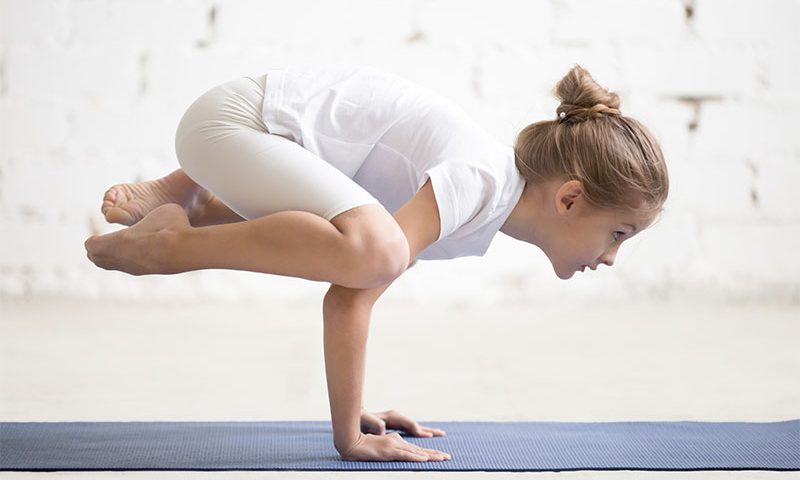
Fire Cupping – Chinese Folktale or a real healing treatment?
September 29, 2017
What are Body Meridians and Energy Pathways?
October 6, 2017Yoga and Children

Yoga and Children | Ana Heart Blog
Today, many adults around the world are seeking clarity and salvation in the form of yoga. As new research and studies are coming to light, the ancient art is becoming increasingly popular with children, too. Whether you’re simply interested in learning about the health benefits the practice has to offer, or you’re planning to start teaching your little ones some simple poses right away, below we explore why introducing yoga into children’s lives can be a positive and beneficial decision.
Is it safe for children to do yoga?
Understandably, at the forefront of any parents mind is the safety and well-being of their child. Today, it seems that even the most mundane activities are seen by some as being ‘dangerous’ for children, so it’s not surprising if you’re left feeling a little uneasy about introducing your children to anything new. After numerous studies have gone into assessing the benefits of yoga for small children, you’ll be pleased to know that it has been proved to be 100% safe – providing it is practiced correctly. Like with any new venture, if you don’t feel confident in the techniques yourself yet then it may be worth starting off with a couple of classes taught by an experienced yogi. If you do decide to attend a local class, ensure your child has suitable yoga clothes and find out if the session provides commentary yoga mats; if it doesn’t, then why not let your little one pick out their own special mat and take it along with you.
Benefits of Yoga for Children
Maintains Flexibility and Increases Strength
Children are born with a natural gift of incredible flexibility. As we age, it’s no secret that we long for our bodies to be able to move the way they could as a child. Regularly practising yoga as a child is something that can prolong this ability. With the chance to train the muscles to stay strong and supple from a young age, in later life, strong muscles will continue to bounce back, and heal that little bit fast from injury and trauma.
Boosts Concentration
Yoga teaches skills in self-discipline and helps concentration, even when practiced as an adult. Providing kids with the chance to learn an array of different paced poses from a young age, teaches them that attention and self-awareness are important in order to achieve your goals.
Increases Self-esteem
Beliefs that make up our adult self-esteem, are often formed in early childhood. Taking time to celebrate small successes achieved through activities such as yoga, teaches little ones that they can do amazing things if they put their mind to it. The chance to display the great strength, poise and power learned through yoga can do wonders for their confidence, contributing to self-esteem foundations for later life.
Provides Tools for Stress Management
In a calm, accepting environment, yoga helps children to outlet their stress in a positive way. As does any kind of exercise, yoga promotes the release of endorphins in the body, which is often referred to as “happy hormones”. These positive chemicals created through exercise can contribute to an increase in overall mood. Helping your child to find a positive way to outlet stress and frustration is something that can prove beneficial as they grow and develop into adulthood.
Encourages Kindness and Non-judgement
The constant images of unrealistic ‘perfect bodies’ that the media is bombarding us with daily can affect everyone, even small children; with studies showing that over 50% of girls between the ages of 6 and 8 would like to change their bodies because they can see they don’t look like the airbrushed supermodels on the television. Taking part in a children’s yoga session shows kids that everybody is different, and promotes celebrating those differences throughout life. They will begin to learn that although everybody looks different from the outside, at heart they are all aspiring to achieve the same goals.
Teaches Discipline and Responsibility
Like any brand new skill, yoga isn’t something that can be taught overnight. The journey children will endeavour when learning new poses will show them that success needs to be worked for and that in order to see results you need to stick with it. Teaching the skill of commitment at a young age can be beneficial in relationships, responsibilities in addition to general day to day life.
Yoga Poses for Beginners
Bow Pose
Start this pose by lying flat on your tummy. Slowly bend both knees in unison, bringing your legs up behind you. Next, lift the chest off the floor and reach both arms back towards your toes, holding onto the feet. You are in Bow Pose. Hold for 15 seconds before letting go of your feet and lowering the legs back to the floor.
Bridge Pose
To begin, lay flat on your back, bending the knees while keeping the soles of your feet touching the floor. Relax both arms, letting them drop carefully to the sides of your body. Tuck your chin into your chest then lift your buttocks and back off the floor, creating a bridge. You are in Bridge Pose. Hold for 15 seconds before lowering back and buttocks back down to the ground.
Cat Pose
Start in an all-fours position. Ensuring that both arms are positioned directly underneath the shoulders, start to slowly round your back, as if stretching the middle portion up toward the ceiling. With your chin tucked into the chest, hold this pose for 15 seconds or as long as it feels comfortable.
Child’s Pose
To start, kneel carefully on the ground, sitting back on your heels. Gently bring your forehead down towards the floor, until it is comfortably resting in front on your knees. Relax both arms to the sides of your body, and feel the stretch along the entirety of your back. You are in Childs Pose. Hold for 15 seconds while taking a couple of deep breaths to increase the stretch.
Resting Pose
A popular choice in any children’s yoga class, resting pose is simple. All you need to do is lie down on your back, relaxing your arms by your sides while keeping both legs stretched out. You are in Resting Pose. Take this time to concentrate on your breathing for as long as you feel happy doing so. This pose focuses on rest and reflection, so encourage your child to take some time to do this.
Yoga can be a highly productive and beneficial activity for children to introduce into their everyday lives. Not only does it teach them strength, discipline and concentration, but it also helps them to learn the importance of taking a few minutes each day for yourself. As they grow up, this knowledge will encourage them to continue to take time to rest and reflect.

